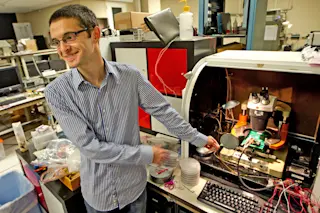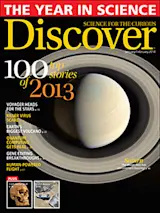For decades, the computer chip industry has steadily improved devices’ performance by cramming ever more, ever tinier silicon transistors — the components that make up circuits — onto each chip. But the unreliability of silicon transistors smaller than about 10 nanometers means the pace of progress in silicon-based computing will soon slow.
The implications of that slowing could be dramatic, says Stanford University circuit designer Subhasish Mitra. Imagine, he says, an alternate reality where silicon hit its limits in 2001: In this world, smartphones don’t exist.
This wafer contains transistors made from carbon nanotubes, which offer an alternative to silicon-based computing. (Credit: Norbert von der Groeben/Stanford)
Norbert von der Groeben/Stanford
In September, Mitra and materials scientist Philip Wong demonstrated a long-sought alternative: the first carbon nanotube (CNT) computer, built from transistors made not from silicon, but from single-atom-thick straws of carbon, called carbon nanotubes. Carbon nanotubes are only about 1 ...















